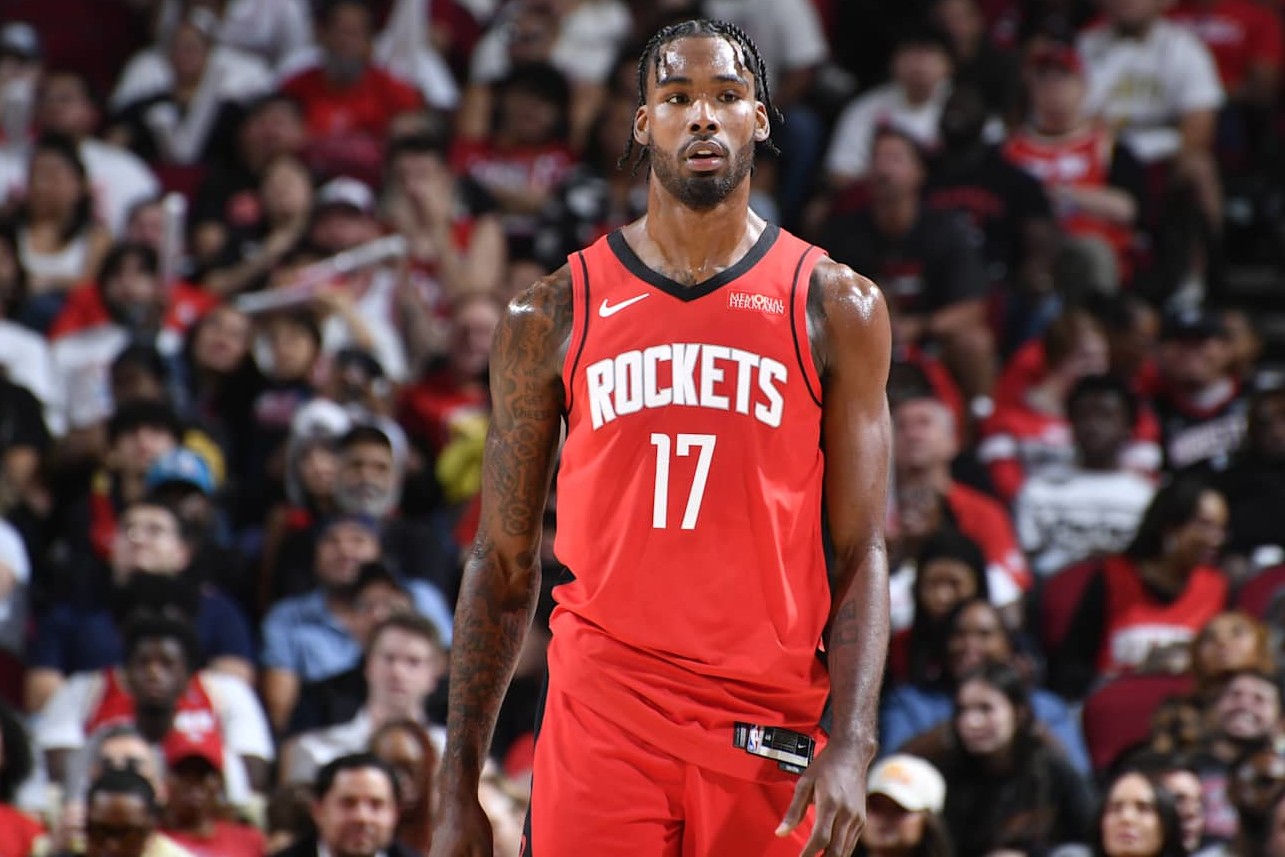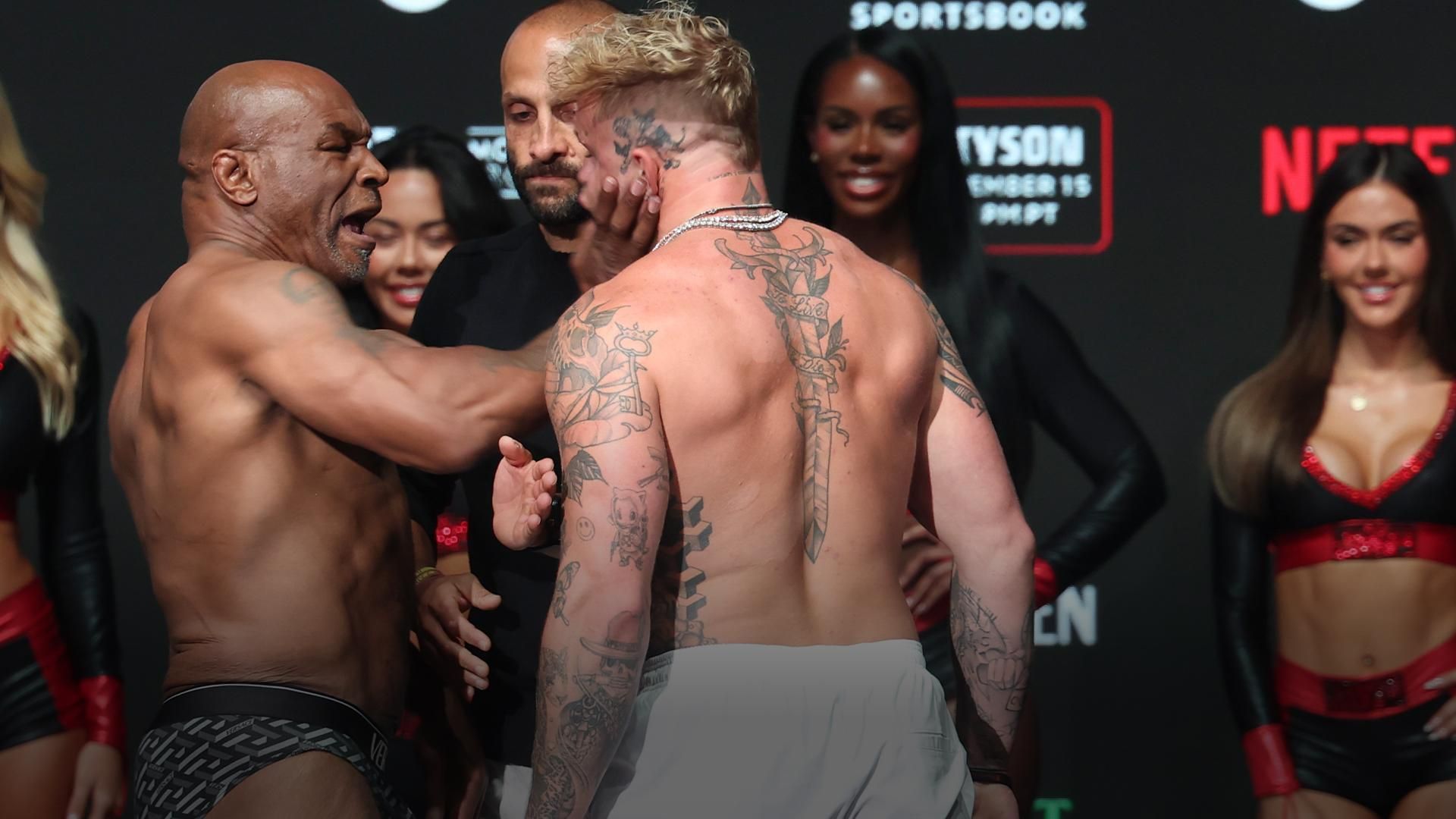
Every NBA team officially has at least one 2024-25 regular-season game under its belt. Naturally, we're overdue for some hypothetical trades. Contenders will be the focus of this thought exercise.
And no, not all of them will be appearing here. It is much too early for us to go down that rabbit hole. Championship-hopeful qualifications are debatable.
This space is looking at any team that, as currently constructed, profiles as an inarguable top-four-in-its-conference candidate. From there, we're plucking out potential opportunities in an attempt to deepen rotations and plug certain holes. Prospective contenders that aren't stacked as hell (Boston, Dallas, Oklahoma City) or fresh off wholesale roster reinventions (Minnesota, New York) will be given priority.
The goal this early on isn't to reinvent or break up any core. It is to futz and fiddle—to upgrade the middle of the rotation or improve on the margins. Cleveland Cavaliers Receive: Larry Nance Jr.
Atlanta Hawks Receive: Georges Niang, 2026 second-round pick, Denver's 2027 second-round pick Dynamic wings tend to top external wish lists for the Cavaliers. And, well, that's fair! But those are hard to find even if you're drowning in assets, and Cleveland could also use a combo big who can play alongside one of Evan Mobley and Jarrett Allen or independent of both. Reuniting with Nance is just what the depth chart ordered.
The 31-year-old spaces the floor enough to orbit the Cavs' other bigs on offense, and he can be deployed in various capacities at the defensive end. Slot him beside Allen, and Nance can handle assignments and reads away from the basket. Play him next to Mobley, and the two are borderline interchangeable from the inside out.
Cleveland's frontline is also ideally built to cover up for Nance's weaknesses. You can get away using him as the de facto 5, but head-on-a-swivel rim protection isn't his strong suit. The reps he'll have to spend in that role are virtually nonexistent when both Allen and Mobley are available.
Prying him out of Atlanta shouldn't be a back-breaking endeavor. The Hawks didn't even play Nance in their opening-night win over the Brooklyn Nets. They might flinch at the balance of Niang's contract ($8.
2 million in 2025-26), but this trade gives them an additional $2.7 million of wiggle room underneath this year's luxury-tax line while arming them with a mid-end expiring salary to use as a matching tool over the offseason. Grabbing two seconds should be enough to push this over the hump, though Cleveland can toss in a third if need be.
Denver Nuggets Receive: Jevon Carter Chicago Bulls Receive: Zeke Nnaji, Jalen Pickett, cash Trade options for the Nuggets are in scant supply unless they look at jettisoning one of their core members or prospects. This is not the time of year to even hypothetically nudge them in that direction. Finding a home for Nnaji's contract while adding a more playable contributor is the move.
And even that isn't a mindless venture. Nnaji is in the first season of a four-year, $32 million deal that is currently underwater. It is small enough to be non-detrimental; it'll never take up 7 percent of the salary cap.
But the length of it requires his next team to see upside in his services. Chicago may be just the trade partner. It needs as many floor-stretchers as possible around Josh Giddey and has few big-man options after Nikola Vučević and Jalen Smith.
Granted, Nnaji isn't a typical 4-5. He's better at navigating perimeter assignments than protecting the hoop or crashing the glass. But at 23, the outlines of a serviceable option remain intact.
The Bulls have both the gradual timeline and rotation to explore it. Hammering out the rest of this package would be so easy if the Nuggets had second-rounders to trade. They don't.
And while Carter has no discernible path to playing time in Chicago, the Bulls may not be inclined to sub out his money ($6.8 million player option in 2025-26) for what's left on Nnaji's deal. Pickett and cash alone may not even get this to the finish line.
Chicago has enough guards, and the 25-year-old's summer league and preseason struggles don't augur well for his future. On the flip side, though, Denver may want to pearl-clutch someone it considered a first-round talent. Shaving money off this year's tax bill softens that (potentially erroneous) view.
And while Carter is coming off a down 2023-24, his value as a pesky defender who can space the floor without needing to dominate the ball endures. Conventional floor general-ing admittedly isn't his bag, but the Nuggets have pretty much no one behind Jamal Murray and Russell Westbrook. Carter offers a nice change-of-pace option over the latter in certain matchups, and he might be someone head coach Michael Malone tests in dual-point-guard combos.
Memphis Grizzlies Receive: Vit Krejčí Atlanta Hawks Receive: 2026 second-round pick (most favorable from Los Angeles Clippers, Boston, Indiana and Miami), 2027 second-round pick (its own) (*Trade cannot be completed until Dec. 15) Injuries are already hampering a Grizzlies wing rotation that isn't particularly deep or especially big in the first place. GG Jackson II (foot), Luke Kennard (foot) and Vince Williams Jr.
(leg) all begin the regular season on the shelf. Jackson's injury is the only one considered a long-term issue, but Memphis remains light on 6'6" to 6'9" types with a semblance of both ball and floor-spacing skills—unless you're sure Jaylen Wells will pop in Year 1. Krejčí can wear a bunch of different hats inside the Grizzlies rotation.
At 6'8", he is bigger than you think. The outside shooting he displayed to close the season in Atlanta last year—41.2 percent on 3.
1 threes per game—may be an overstatement of his touch. But it's worth further exploration. The 24-year-old also has some shiftiness off the dribble and can sponge up point guard reps.
His passing and reads out of pick-and-rolls can be all over the place, but as a contingency behind Ja Morant, Desmond Bane, Marcus Smart and Scottie Pippen Jr., he should be more than usable. This says nothing of the defensive hustle he showed last season.
The Hawks threw him on everyone from smaller advantage creators to big-ass wings and combo forwards, and he largely held his own. Extracting him from Atlanta will be a chore for that exact reason. (He also took on backup point guard duties in the team's opening-night victory.
) The Hawks signed him to a four-year, $10.2 million deal over the offseason, a potential bargain-bin pact that may be worth more than two seconds. Except one of them is Atlanta's own.
That matters. And Memphis can juice the overall return with more. A heavily protected first goes too far, but the calculus can change if the deal is expanded to get off money the Grizzlies don't necessarily want to keep beyond this season.
Milwaukee Bucks Receive: Cody Martin, 2025 second-round pick (least favorable from Denver, New Orleans and Philadelphia) Charlotte Hornets Receive: Pat Connaughton, 2031 second-round pick Milwaukee could use some additional help on the wings even if you don't expect Khris Middleton to miss a ton of time as he recovers from dual-ankle surgery. Martin's own injury renders him a risk, but it's a measured one. Various knee and ankle injuries have limited him to just 35 games over the past two seasons.
When healthy, though, he's a malleable on-ball defender. Charlotte has routinely deployed him against 1s, 2s, 3s and even 4s. At his peak in 2021-22, Martin also showed that he can knock down spot-up threes and torch defenses as a connective passer and tertiary playmaker.
Connaughton is a real rotation player for Milwaukee, so losing him could sting. Especially if Martin winds up back on the shelf. But the latter offers more defensive range, and Connaughton isn't nearly a consistent enough shooter to paint this as a floor-shrinking swap.
Martin offers financial optionality moving forward to boot. His $8.6 million salary for 2025-26 is non-guaranteed, while Connaughton holds a $9.
4 million player option. Figuring out compensation for Charlotte is complicated. Peak Connaughton is a tenacious floor-runner who works alongside LaMelo Ball and Brandon Miller, but the Hornets have enough not-quite-wings on the roster.
Getting Milwaukee's 2031 second should effectively grease the wheels, but that's a tall order from the Bucks' end. Sending a back-end second-rounder in next year's draft to the Deer District feels like it bridges that gap. Philadelphia 76ers Receive: Tari Eason, Jae'Sean Tate Houston Rockets Receive: K.
J. Martin, Reggie Jackson, 2028 first-round pick (via Los Angeles Clippers) (*Trade cannot be completed until Jan. 15) Philly is the rare contender with multiple first-round picks to trade, the ability to aggregate salaries (so long as it doesn't take back more money) and, above all, a lead front office executive unafraid to keep tinkering and swinging.
Team president Daryl Morey has a lot to work with on the trade market once the calendar flips to 2025, and the Sixers have a smattering of problem spots worth upgrading. From a properly sized forward who doesn't shrink the floor and can insulate Paul George and Caleb Martin against doing too much defensively to some bigger guards and even another center behind Joel Embiid and Andre Drummond, Philly has no shortage of needs to address. And the urgency to do so increases tenfold if spotty availability from Embiid and George lingers.
Nabbing Eason is right up the Sixers' alley. He has another year left on his rookie scale after this one, which could help buy Philly time before having to cannonball into second-apron territory. More importantly, when healthy, he's an All-Defense candidate who thrives creating chaos without leaving the possession or his teammates out to dry.
A lineup featuring him, George, Embiid, Caleb Martin and Tyrese Maxey has best-net-rating-in-the-league potential. Tate isn't some throw in, either. He adds tertiary ball-handling in a pinch, and though he's only 6'4", he has repeatedly shown he can guard up and down the positional spectrum.
Convincing the Rockets to part with Tate shouldn't be difficult. He doesn't forecast as a regular rotation member. Eason is a different story.
But Houston is overloaded with combo wings and forwards, and the 23-year-old is on the precipice of extension eligibility next summer. Tough choices await the Rockets. They already committed big money to Jalen Green and Alperen Şengün, and Jabari Smith Jr.
becomes extension eligible next summer as well. Their somebody-has-to-go decisions needn't be made in-season, but they aren't going to keep all of Smith, Amen Thompson and Cam Whitmore long term. (This says nothing of Dillon Brooks.
) Snatching a future Clippers pick is a huge deal. That's an asset Houston can use to fill out a more expensive version of itself with cost-controlled talent or include in a future blockbuster trade. The Rockets may insist on getting more.
The Sixers probably argue this is too much, given that Tate's an expiring contract and Eason hasn't enjoyed the cleanest bill of health. Maybe this involves more moving parts. But it's a framework that should, at the very least, get both teams thinking.
Dan Favale covers the NBA for Bleacher Report. Follow him on Twitter ( @danfavale ), and subscribe to the Hardwood Knocks podcast, co-hosted by Bleacher Report's Grant Hughes . Unless otherwise cited, stats courtesy of NBA.
com , Basketball Reference , Stathead or Cleaning the Glass . Salary information via Spotrac . Draft-pick obligations via RealGM .
.














